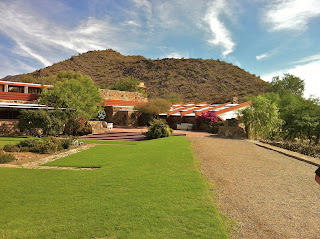On the occasion of my 8th year of "BRAND INNOVATION," I'm reflecting back on the convergence of advancements both in science and technology, and in the science of branding.
Over these years, we’ve seen medical breakthroughs in biotech research, as well as more sophisticated marketing discipline. It is because of this convergence that we now stress the value to research companies of branding earlier in the developmental cycle.
Earlier branding of science and technology products accomplishes two important financial objectives: one, it can significantly move the product adoption curve to the left, which means a measurable acceleration of pre-launch awareness and launch sales uptake; and two, it can create greater value for future potential transactions, including co-promotion rights, licensing royalties, or even acquisition.
In a six-month series of interviews in 2004, I documented five BALANCING factors faced by executives of research-based companies.
- Because so many discoveries are being made by small and start-up firms, they face the daunting scale of a blockbuster launch. This is true even in traditional “specialty” markets that now have billion-dollar potential.
- When it comes to managing investor expectations, the discovery company is often pressured to grow or build its brands alone. On the other hand, if a larger company licenses or acquires a product, stock analysts expect to see rapid indicators of highly likely returns.
- Timing the shift of resources from product R&D to brand marketing can be quite difficult. The typical research company CEO has spent years seeking capital resources to fund development, but knows a product launch will require a new level of human resources — particularly for a sales and marketing organization that researchers have less experience in building.
- Most independent research companies find themselves walking an autonomy tightrope. There is an intense desire for self-reliance by product inventors, but the involvement of new funders or licensors inevitably leads to some shared control.
- Perhaps the most surprising is that many discovery company executives still think a breakthrough can literally “sell itself.” They usually imagine unquestionable trial results in every phase of commercialization, an indisputable ability to publish in the best-reviewed journals, and an incontestable groundswell of support leading to an almost universal change in behaviors.
There has been even more evidence in the years since — and too many examples of disappointment when the old approach fails to achieve success. It is now commonly believed among the most successful brand marketers that “blockbusters are made.”
It is within this environment of convergence that I began offering product managers at science and technology companies a process called BRAND INNOVATION.
I called it Brand Innovation in order to connect to the scientific product innovation that drives the company’s efforts. And we demonstrate how to extend the innovation into brand positioning, packaging, put-ups, user programs, public relations, and more.
A creative innovation model that leverages the science of branding
This BRAND INNOVATION model has been developed using a thorough review of academic journals, trade publications, and branding books. It also draws from the conclusions of market research conducted in more than 36 U.S. and global launch programs. Moreover, it capitalizes on my experience with about 100 different medical, science, and technology brands developed and/or supported by my consultancy.
The model has been shown to be effective in both large multinational corporations and in small biotech start-ups.
 The first step in the complete innovation process is called “C.H.E.M.®” — a verbal and visual nomenclature created to communicate a product’s performance and promise. It represents an expression of the product’s strategic direction and a blueprint for brand building (graphic above).
The first step in the complete innovation process is called “C.H.E.M.®” — a verbal and visual nomenclature created to communicate a product’s performance and promise. It represents an expression of the product’s strategic direction and a blueprint for brand building (graphic above).
In this creative innovation model, a manager can reach the goal of captivating customers in ways that go beyond traditional “interruptive assumptions” of advertising. By applying the tool, brand marketers can truly create brand CHEMistry with customers.
Consider these areas of application for Brand Innovation
In my experience, there are a number of potential areas of brand construction during the early phases of research and development. These include creating the branded names, copy, graphics, and symbols for the product’s:
• Molecule/generic
• Methodology of research
• Manufacturing process
• Mechanism of action
• Medicinal class or category
• Mode of delivery
• Market segment
• Medical promise
How to begin now increasing the value of your research
For the research company executive interested in exploring this approach, begin now to add branding experts to your circle of advisors.
Invite science and technology brand consultancies to present to your management team and board early in the developmental cycle. You may also find that companies with whom you’re already collaborating (such as material suppliers, industrial designers, and testing organizations) have brand resources they could share with you.
Finally, if you are planning a co-marketing arrangement, assess the partner company’s Brand Innovation experience, key evaluation criteria beyond market experience and sales force size.
In conclusion, the convergence of technology and branding advancement creates an atmosphere well suited for increasing value of product research through earlier branding. Brand Innovation is an approach than can significantly move the product adoption curve to the left and can create greater value for future potential transactions.




























































